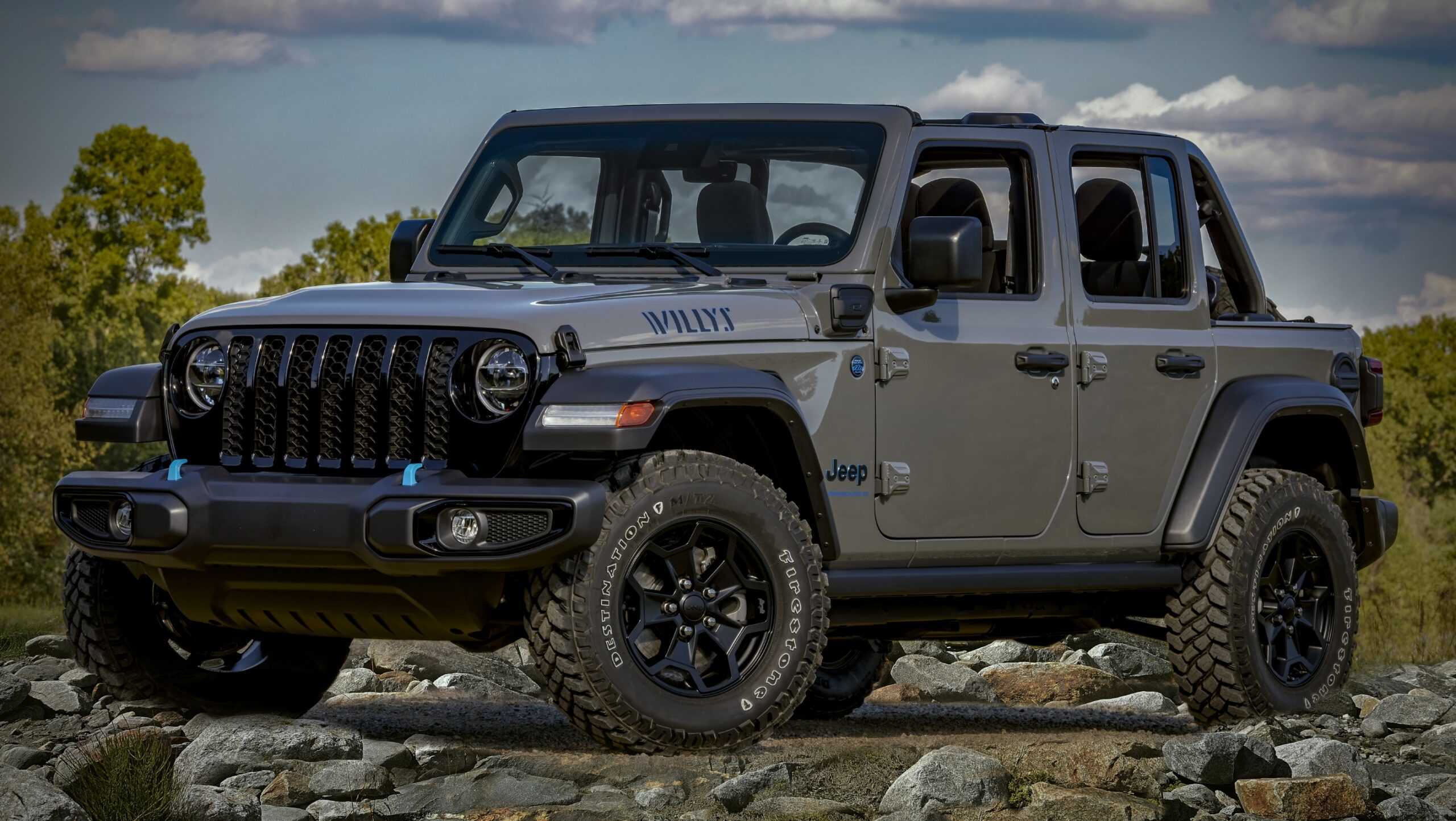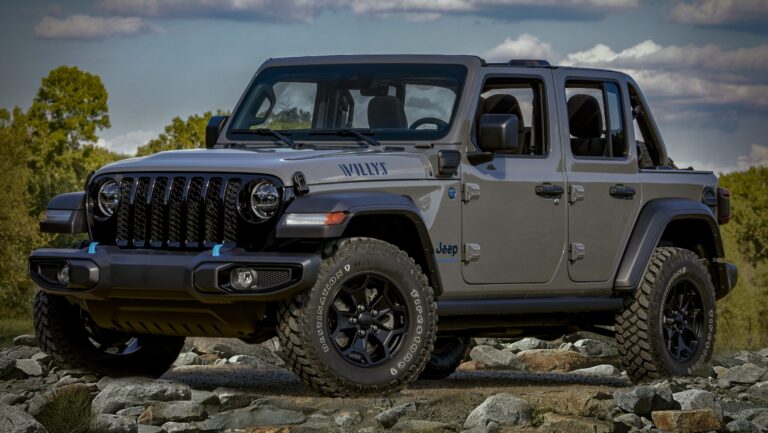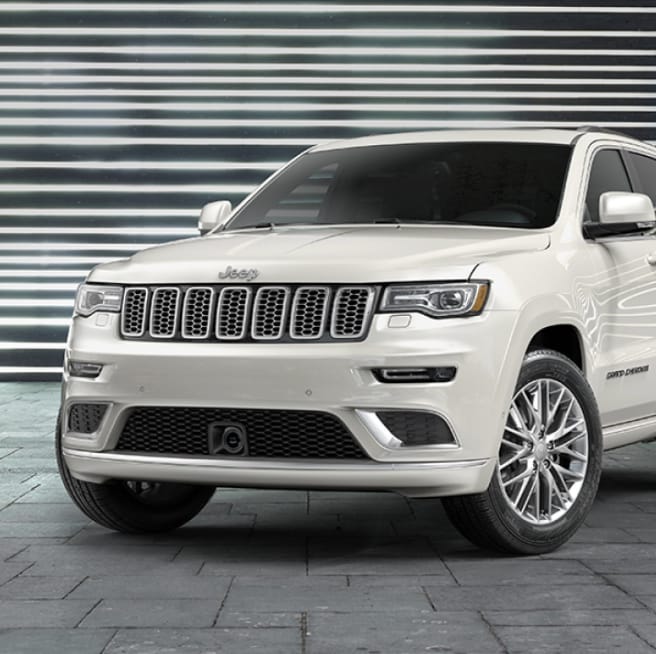Jeep Wrangler Frame For Sale: The Foundation of Your Off-Road Dream
Jeep Wrangler Frame For Sale: The Foundation of Your Off-Road Dream jeeps.truckstrend.com
The Jeep Wrangler. For many, it’s more than just a vehicle; it’s a symbol of freedom, adventure, and unparalleled off-road capability. At the heart of every Wrangler’s legendary robustness lies its robust, ladder-style frame – the very backbone that supports its iconic body, powerful drivetrain, and rugged suspension. But what happens when this crucial component succumbs to the ravages of rust, accident damage, or simply the desire for a fresh start? This is where the concept of a "Jeep Wrangler Frame For Sale" becomes incredibly relevant.
Acquiring a standalone Jeep Wrangler frame opens up a world of possibilities for restoration enthusiasts, custom builders, and those looking to breathe new life into a beloved, yet structurally compromised, vehicle. It’s a significant undertaking, certainly, but one that can be immensely rewarding, offering a path to rebuild, upgrade, or even create a unique Jeep tailored to specific needs. This comprehensive guide will delve into everything you need to know about purchasing a Jeep Wrangler frame, from understanding why you might need one to navigating the complexities of acquisition and installation.
Jeep Wrangler Frame For Sale: The Foundation of Your Off-Road Dream
Why Buy a Standalone Jeep Wrangler Frame? Exploring the Motivations
The decision to purchase a standalone Jeep Wrangler frame isn’t made lightly. It typically arises from specific circumstances where repairing the existing frame is either impractical, unsafe, or simply impossible. Understanding these motivations is key to appreciating the value and necessity of frames available for sale.
- Severe Rust Damage: This is perhaps the most common reason. Jeep frames, especially older models exposed to road salt and harsh environments, are notorious for developing significant rust. While surface rust can be treated, structural rust that compromises the frame’s integrity necessitates replacement for safety and longevity. This often manifests around control arm mounts, spring perches, and crossmembers.
- Accident Reconstruction/Repair: A severe impact can bend, twist, or crack a frame beyond repair. For Jeeps with otherwise salvageable bodies, engines, and transmissions, acquiring a straight, undamaged frame can be a cost-effective alternative to purchasing an entirely new vehicle.
- Custom Builds and Restorations: Enthusiasts often seek out bare frames for ground-up custom builds. This allows for modifications, reinforcements, or even wheelbase extensions that wouldn’t be feasible or safe on an existing, complete vehicle. For classic Jeep restorations, a new or refurbished frame provides a solid, original-spec foundation.
- Body Swaps: Sometimes, a Jeep might have a pristine frame but a severely damaged body, or vice-versa. A frame-for-sale scenario allows for the swapping of a good body onto a solid frame, combining the best parts of two different vehicles.
- Salvage Title Jeeps: A vehicle deemed "totaled" by an insurance company due to frame damage might be available at a significantly reduced cost. If the body and powertrain are sound, a frame swap can bring it back to life, though re-titling and inspections will be necessary.

Types of Jeep Wrangler Frames Available
Not all frames are created equal. When searching for a "Jeep Wrangler frame for sale," you’ll encounter various types, each with its own advantages, disadvantages, and price point.
- OEM (Original Equipment Manufacturer) Frames: These are brand-new frames, either directly from Jeep (Mopar) or from an authorized supplier that manufactures them to original specifications.
- Pros: Perfect fit, guaranteed quality, no rust or damage, often come with VIN tags (though transfer rules vary).
- Cons: Most expensive option, can be difficult to source for older models.
- Aftermarket Frames: Several reputable aftermarket companies produce replacement frames for various Wrangler generations. These often incorporate design improvements, such as thicker steel, additional bracing, or modifications for specific off-road uses (e.g., stretched wheelbase, coilover mounts).
- Pros: Can be stronger than OEM, offer custom options, new condition.
- Cons: Pricey, may require minor modifications for specific components, limited availability for certain models.
- Used/Salvage Frames: Sourced from wrecked or parted-out Jeeps, these frames are the most common and affordable option.
- Pros: Significantly cheaper, readily available.
- Cons: Crucially, require thorough inspection for rust, bends, cracks, and previous repairs. You’re buying someone else’s problem if you’re not careful. The condition can vary wildly from "like new" to "barely salvageable."
- Restored/Refurbished Frames: These are used frames that have undergone a professional restoration process. This typically involves sandblasting, inspection, repair of minor damage, and application of a protective coating (e.g., powder coat, epoxy paint).
- Pros: Better condition than raw used frames, often come with a warranty from the refurbisher, a good middle ground between new and purely used.
- Cons: More expensive than raw used frames, quality depends on the refurbisher.
Key Considerations Before Purchasing a Jeep Wrangler Frame
Buying a bare frame is a significant investment of time, money, and effort. Before you even start searching, arm yourself with knowledge.
- Condition is Paramount: For used frames, this cannot be stressed enough.
- Rust: Differentiate between surface rust (cosmetic) and structural rust (compromising integrity). Pay close attention to common rust spots: skid plate mounting points, control arm mounts, spring perches, body mounts, and the rear cross member. Use a hammer to tap around suspicious areas; a dull thud indicates thin metal, while a sharp ring suggests solid steel.
- Bends/Twists: Even a minor accident can twist or bend a frame, leading to alignment issues and unsafe handling. Look for uneven gaps, signs of pulling, or visible kinks. Ideally, measure critical points if possible (though this is hard without a frame jig).
- Cracks: Inspect all welds and stress points for hairline cracks.
- Previous Repairs: Look for evidence of welding or patching. While some repairs are acceptable, poor quality work can be a red flag.
- Year and Model Compatibility: Jeep Wrangler frames vary significantly between generations:
- YJ (1987-1995): Leaf springs, narrower frame.
- TJ (1997-2006): Coil springs, different suspension mounting points.
- LJ (2004-2006 Unlimited): Longer wheelbase TJ frame.
- JK (2007-2018): Much larger, different body mounts, wider.
- JL (2018-Present): Further evolved, distinct from JK.
Ensure the frame you’re looking at is explicitly for your specific year and model. Subtle differences can cause major headaches during assembly.
- VIN Implications and Legalities:
- No VIN: Many bare frames are sold without a VIN. This simplifies the purchase but means you’ll transfer your existing vehicle’s VIN to the new frame. Research your local DMV’s requirements for "re-bodying" or "frame swaps." You may need an inspection.
- Frame with VIN: If the frame comes with its own VIN (e.g., from a parted-out vehicle), you might effectively be building a "new" vehicle and would need to register it under that VIN. This process is highly regulated and varies by state/country. Always check with your local Department of Motor Vehicles (DMV) before purchasing a frame with a VIN.
- Shipping and Logistics: Frames are large, heavy, and awkward.
- Freight Shipping: Expect significant costs for shipping via freight carrier, especially across long distances. Get a shipping quote before committing to a purchase.
- Local Pickup: If possible, finding a frame locally or within a reasonable driving distance is often the most cost-effective solution. You’ll need a large trailer or a flatbed truck.
- Cost vs. Value: Factor in not just the frame’s purchase price but also potential shipping, any necessary repairs/treatments (sandblasting, painting), and the immense labor involved in a frame swap. Sometimes, buying a complete donor vehicle might be more economical if you can part out the remaining components.
The Process of Acquiring a Jeep Wrangler Frame
Once you’ve decided a frame swap is the right path, here’s how to go about finding and securing your new foundation.
- Where to Look:
- Online Marketplaces: eBay, Craigslist, Facebook Marketplace, and dedicated Jeep forums (e.g., JeepForum, WranglerForum) are popular places for used frames.
- Salvage Yards/Auto Recyclers: Local and regional salvage yards often have wrecked Jeeps they’re parting out. This allows for in-person inspection.
- Specialty Jeep Parts Dealers: Companies that specialize in Jeep parts, especially restoration or custom shops, might sell new, refurbished, or even custom-built frames.
- Word-of-Mouth: Local Jeep clubs are excellent resources for leads.
- Inspection Checklist (for Used Frames):
- Visual Inspection: Thoroughly examine every inch of the frame for obvious bends, twists, cracks, or welds. Pay extra attention to common rust areas.
- Rust Probe: Use a small hammer or pick to tap on suspected rust spots. Listen for solid metal vs. crumbling.
- Measurement (if possible): If you have access to frame specifications, take critical measurements (e.g., distance between suspension mounting points, frame rail width). This is best done on a level surface.
- VIN Verification: If the frame has a VIN, ensure it’s clear and matches any provided documentation.
- Seller Questions: Ask detailed questions about the frame’s history, where it came from, and why it’s being sold. Request high-resolution photos or a video call if buying remotely.
- Negotiation and Purchase: Don’t be afraid to negotiate, especially on used frames. Once satisfied with the inspection, ensure you have a clear bill of sale, especially if a VIN is involved.
- Transportation: Plan ahead! A bare frame is unwieldy. Arrange for a flatbed tow truck, a large utility trailer, or specialized freight shipping.
Challenges and Solutions in a Frame Swap
A frame swap is one of the most involved automotive projects you can undertake. Be prepared for challenges.
- Finding the "Right" Frame: It can take time to locate a frame in the correct condition and for the specific model you need, especially for older generations.
- Solution: Be patient, broaden your search geographically, and be willing to travel or pay for shipping. Set clear criteria for condition.
- Hidden Damage/Rust: What looks good in photos might reveal issues in person.
- Solution: Prioritize in-person inspection. If buying remotely, ask for multiple detailed photos/videos, consider hiring a local mechanic for a pre-purchase inspection, or factor in a budget for potential repairs.
- Shipping Costs: Freight can be surprisingly expensive.
- Solution: Always get a shipping quote upfront. Explore "less than truckload" (LTL) options. Consider breaking the journey into segments if traveling a long distance to pick up.
- Legal/Registration Hurdles: Transferring VINs or registering a new frame can be a bureaucratic nightmare in some regions.
- Solution: Do your homework with the DMV BEFORE you buy the frame. Understand all requirements, paperwork, and inspections needed.
- Installation Difficulty: A frame swap involves disassembling almost the entire vehicle, then reassembling it onto the new frame. This requires significant mechanical aptitude, specialized tools (engine hoist, body lift, transmission jack, air tools), and often a second pair of hands.
- Solution: Be realistic about your skills and available tools. If in doubt, budget for professional assistance, especially for lifting the body off and on the frame. Label everything during disassembly. Take hundreds of photos.
Practical Advice for a Successful Frame Swap
Embarking on a frame swap is a monumental task, but with careful planning, it’s entirely achievable.
- Do Your Homework: Before you even look for a frame, research your specific Jeep model’s frame dimensions, body mount locations, and common swap procedures. Online forums and YouTube are invaluable resources.
- Budget Accordingly: The frame itself is just one cost. Factor in shipping, consumables (bolts, nuts, fluids), new bushings, paint/coating for the new frame, and potential unforeseen repairs.
- Document Everything: Take photos and videos at every step of disassembly. Label every wire, hose, and bolt. Use zip-lock bags for small parts and label them by location. This will save you countless hours during reassembly.
- Prepare Your Workspace: You’ll need a large, level, and clean area. A concrete garage floor is ideal. Ensure good lighting.
- Gather Necessary Tools: Beyond basic hand tools, you’ll likely need an engine hoist, tall jack stands, a transmission jack, a body lift kit (or equivalent means to separate body from frame), an air compressor with impact tools, and potentially a welding machine for any custom work.
- Get Help: This is not a one-person job. Enlist friends or family for the heavy lifting, especially when removing and re-installing the body.
- Consider Professional Assistance: If you’re uncomfortable with certain aspects (e.g., welding, complex wiring, or the sheer scale of the project), don’t hesitate to consult or hire a professional mechanic or fabrication shop for specific tasks.
Estimated Price Table: Jeep Wrangler Frame For Sale
Prices for Jeep Wrangler frames vary wildly based on condition, generation, and whether they are new, used, or refurbished. The table below provides estimated ranges in USD for general guidance. Always obtain specific quotes.
| Frame Type / Condition | Jeep Generation | Estimated Price Range (USD) | Notes |
|---|---|---|---|
| Used / Salvage | YJ (1987-1995) | $500 – $1,500 | Condition highly variable. Expect rust and potential minor damage. Buyer beware. |
| TJ (1997-2006) | $800 – $2,500 | Common to find. Inspect carefully for rear section rust (control arms, skid plate). | |
| JK (2007-2018) | $1,500 – $4,000 | More robust, but still prone to rust in salt belts. Often from accident vehicles. | |
| JL (2018-Present) | $3,000 – $6,000+ | Newer, less common on salvage market. Often from heavily damaged vehicles. | |
| Restored / Refurbished | YJ (1987-1995) | $2,000 – $4,000 | Sandblasted, repaired, coated. Good option for full restoration. |
| TJ (1997-2006) | $2,500 – $5,000 | Popular choice for rust-belt Jeeps. Often sold by specialty Jeep shops. | |
| JK (2007-2018) | $4,000 – $7,000 | Less common than used, but offers peace of mind. | |
| New OEM / Aftermarket | YJ (1987-1995) | N/A (Extremely Rare) | New OEM virtually non-existent. Aftermarket might be custom build only. |
| TJ (1997-2006) | $4,000 – $7,000+ | Some aftermarket companies offer new frames. Mopar OEM very rare/expensive. | |
| JK (2007-2018) | $6,000 – $10,000+ | New Mopar frames are available but very costly. Some aftermarket options. | |
| JL (2018-Present) | $8,000 – $15,000+ | Mopar OEM likely the primary source for new. |
Note: Prices do not include shipping costs, which can easily add hundreds or even thousands of dollars depending on distance and carrier.
Frequently Asked Questions (FAQ) about Jeep Wrangler Frames For Sale
Q1: Can I just repair my rusted Jeep Wrangler frame instead of replacing it?
A1: For minor, localized surface rust, yes, repair is possible. However, if the rust has perforated the frame, caused significant thinning, or compromised structural integrity (especially at critical mounting points), replacement is generally safer and more durable. Poorly repaired frames can lead to safety issues and ongoing problems.
Q2: Is it legal to swap a frame on my Jeep Wrangler?
A2: Generally, yes, but the legality and process vary significantly by state or country. In many places, if you transfer your original VIN to the new frame, it’s considered a repair. If the new frame has its own VIN and you use it, you might be creating a "new" vehicle and need to register it under that VIN. Always contact your local Department of Motor Vehicles (DMV) or equivalent authority beforehand.
Q3: Do I need to re-register my Jeep after a frame swap?
A3: It depends on your local regulations. If you’re transferring your original VIN to the new frame, you might just need to notify the DMV and pass a VIN inspection. If you’re using a frame with a different VIN, it will likely require full re-registration as a "reconstructed" or "special construction" vehicle. Get clarification from your DMV.
Q4: How much does a professional Jeep Wrangler frame swap cost (labor only)?
A4: Professional labor for a frame swap is extensive and can range from $3,000 to $8,000+, depending on the shop’s rates, the complexity of your Jeep (e.g., extensive modifications), and any unforeseen issues. This does not include the cost of the frame or any new parts.
Q5: What tools are absolutely essential for a DIY frame swap?
A5: Beyond standard mechanics tools, you’ll definitely need: a robust engine hoist, multiple heavy-duty jack stands, a transmission jack, an air compressor with impact tools, a body lift kit or equivalent means to safely separate the body from the frame, and a wide array of wrenches, sockets, and pry bars.
Q6: How long does a typical DIY Jeep Wrangler frame swap take?
A6: For an experienced DIY mechanic with a well-equipped garage, a frame swap can take anywhere from 80-200 hours of labor. For a novice, it could easily be double that, or even more, spread out over several weeks or months of weekends. Planning, labeling, and patience are crucial.
Q7: Where is the VIN located on a Jeep Wrangler frame?
A7: The VIN is typically stamped into the frame rail. On most Wranglers, it’s on the passenger side, near the front wheel well, often visible by looking down between the fender and the frame. It might also be present on the driver’s side or near the front bumper.
Conclusion: The Rebirth of a Legend
The journey of acquiring a "Jeep Wrangler Frame For Sale" and undertaking a frame swap is not for the faint of heart. It demands meticulous planning, significant mechanical skill, and a healthy dose of patience. However, for those willing to embrace the challenge, the rewards are immense. Whether you’re resurrecting a classic, repairing a damaged off-roader, or crafting a custom build from the ground up, a new or refurbished frame provides the robust, straight, and reliable foundation your Jeep deserves.
It’s a project that transforms a vehicle from a collection of parts into a testament to dedication and passion. With careful research, a thorough inspection, and realistic expectations, you can successfully navigate the world of frame acquisition and breathe new life into your beloved Jeep Wrangler, ensuring it continues its legacy of adventure for years to come.





